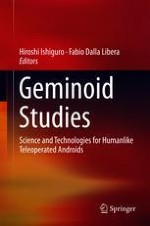2018 | OriginalPaper | Chapter
25. At the Café—from an Object to a Subject
Authors : Ilona Straub, Shuichi Nishio, Hiroshi Ishiguro
Published in: Geminoid Studies
Publisher: Springer Singapore
Activate our intelligent search to find suitable subject content or patents.
Select sections of text to find matching patents with Artificial Intelligence. powered by
Select sections of text to find additional relevant content using AI-assisted search. powered by
